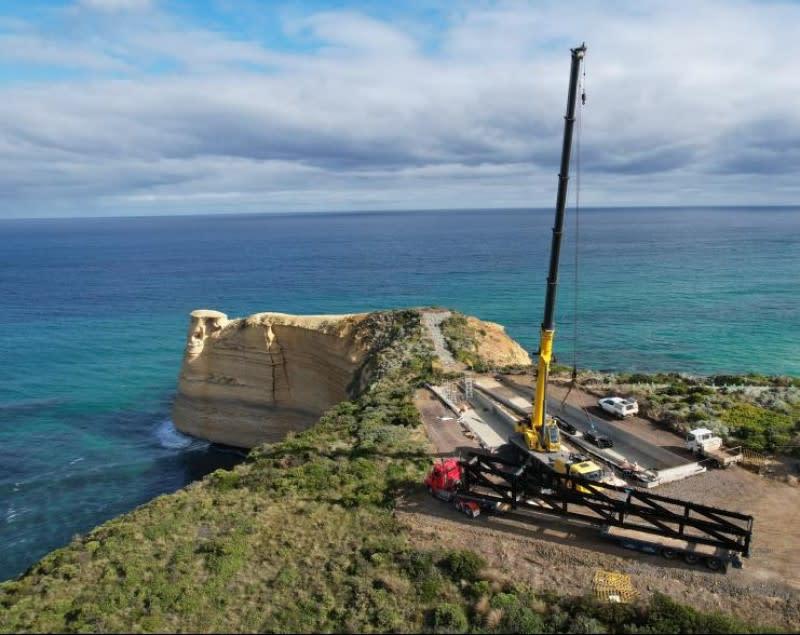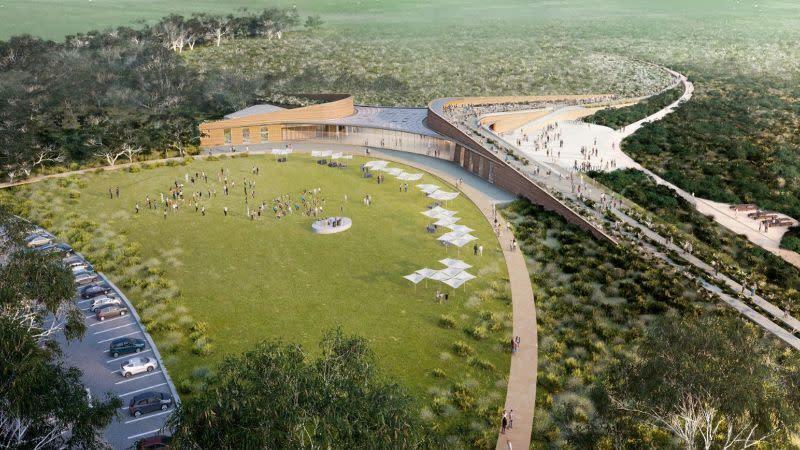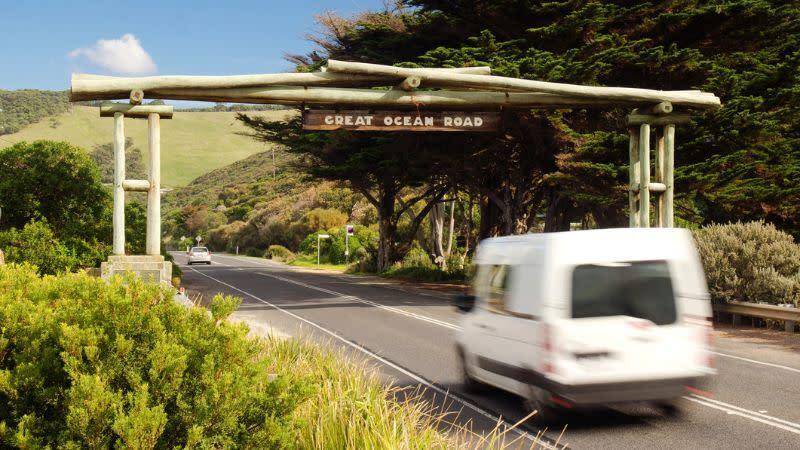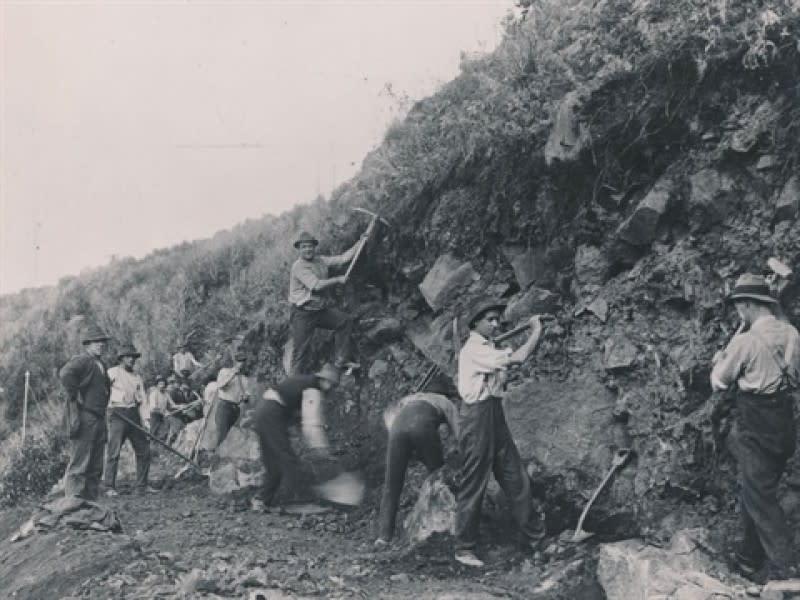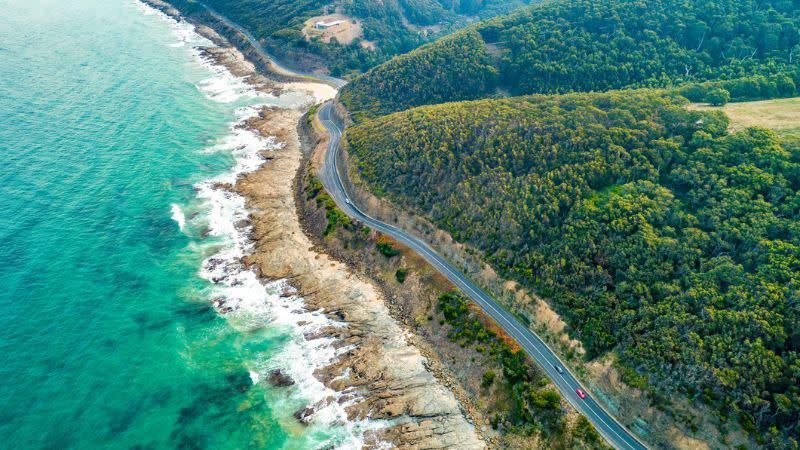If you take a trip across the Nullabor, you may hear about the world’s longest golf course or the museum dedicated to Skylab crashing to earth in 1979s.
And you likely already know of the underground world at Coober Pedy and the sadness and tragedy of Australia’s own nuclear test site at Maralinga.
But as you drive across the lands of the and Eastern Maar, you probably will not realise you are on the longest war memorial in the world: the Great Ocean Road.
And for nearly a decade, it has been getting a much needed makeover, including infrastructure to help future private investment and development.
Development and deals
The Great Ocean Road cuts through 170,600ha of Crown land with around 11 different Crown land managers amid a total of 30 different public entities, each accountable for different aspects of the route.
That alone can make it a bit harder to work out what is happening where—but a large chunk of the development is happening within the $502-million Geelong City Deal.
The Federal and Victorian governments have provided $490 million of that funding and the rest from other funding partners.
While many of the projects in the City Deal focus on the centre of Geelong, there are a number of projects along the Great Ocean Road, stretching into the Shipwreck Coast.
These include the $108.15-million Twelve Apostles Precinct Redevelopment project, the Apollo Bay Harbour Redevelopment, infrastructure upgrades to Kennett River and the Point Grey Lorne Redevelopment project.
The Apollo Bay to Skenes Creek Coastal Trail was shelved by the Federal and state governments as it was determined that such a track would cause too much environmental damage.
Instead, the $4 million allocated to that project will be spent on the aforementioned projects.
The intent is to create more commercial and recreational opportunities by redeveloping the Apollo Bay Harbour.
Meanwhile, the Twelve Apostles Precinct will include a new visitors experience centre designed by Grimshaw Architects, trails, access roads, revegetation, upgrades to lookouts, carparks, shuttle shelters and a temporary event space.
Last year the Victorian Civil and Administrative Tribunal rejected the proposed masterplan for the Point Grey Lorne Redevelopment project sending it back to the drawing board for a new masterplan developed with community and stakeholder feedback.
But more importantly for developers keen on commercial and tourism ventures, the Twelve Apostles project also includes a $23-million Private Sector Business Enablement Fund (PSBEF) which finances infrastructure for private sector investment.
The first funding round has provided finance for infrastructure for a proposed eco-lodge facility,—Princetown Eco Stay, access to Princetown Recreation Reserve, upgrades to Old Coach Road and the construction of a new bridge and trails.
Necessary upgrades for the expansion of Kangaroobie Camp have now been completed while trunk infrastructure for the Great Ocean Road Retreat in Peterborough and for the Twelve Apostles Hot Springs Resort have also been funded.
But the project scope is greater than just the municipality of Greater Geelong.
Shipwrecks to surfing
Another part of the ongoing development is the Shipwreck Coast Masterplan covering 28km through Port Campbell National Park, the Bay of Islands Coastal Park, the Twelve Apostles Marine Park, the Arches Marine Sanctuary and Princetown, Port Campbell and Peterborough.
The Great Ocean Road snakes its way through the Shipwreck Coast, named for its more than 200 shipwrecks, with the masterplan covering how the land around it is managed and how business investments are made.
It is expected to create more than 3500 jobs for Victorians and generate $254 million more in annual spending.
A part of the Victorian government’s 2016 Visitor Economy Strategy, it is meant to attract tourism investment with 72 projects and initiatives.
The Eastern Maar Aboriginal Corporation is working with Parks Victoria on a new $9.2-million lookout at the Saddle in the Twelve Apostles Precinct, another lookout at Loch Ard Gorge, and a new pedestrian bridge over Port Campbell Creek.
It is estimated that these projects with a total investment of $16.5 million, will create 120 ongoing jobs, add $12 million per year to the regional economy, and increase visitor spending by $14 million and visitor numbers by 263,000 annually.
▲ The Great Ocean Road Memorial Arch at Eastern View marks the start of the route.
The push for preservation
In 1919, servicemen returning from World War I began to build the Great Ocean Road in an attempt to connect isolated communities, towns and villages, in honour and remembrance of fallen comrades fallen.
They used had picks, shovels and explosives—mechanised earth-moving was still to come.
It was completed in 1932 with a convoy of 40 cars, the first wheels on the road. It currently covers 243km and is on the national heritage list.
But change is a constant along a coastline—especially one buffeted by the Southern Ocean.
Environmental forces, climate change and increasing numbers of visitors were all taking their toll.
In 2017, the Great Ocean Road had more visitors than both the Great Barrier Reef and Uluru combined—8.6 million annually.
It was discovered the cliffsides were eroding at 2cm per year while 24,000 residents needed services and infrastructure upgrades.
The Great Ocean Road Taskforce was created in September, 2017. Its 2018 report listed 26 recommendations, stating that the Great Ocean Road needed not just conservation and preservation but also upgrades, services and other infrastructure and development alongside it.
It also recommended the creation of the Great Ocean Road Coast and Parks Authority to deliver many of the projects along the road funded via the Geelong City Deal.
The authority was established in 2019. In the six months from December 2020 to June 2021 it had generated $12.8 million in revenue from 750,000 visitor nights across eight of its caravan parks alone.
“This is about giving the Great Ocean Road the proper management and protection it deserves,” the then Victorian energy, environment and climate change minister Lily D’Ambrosio said.
“The Great Ocean Road is one of the country’s most iconic destinations, but it is facing challenges including managing the numbers of visitors and climate change impacts,” D’Ambrosio said in 2021 when the authority was made the dedicated parks manager covering parks from Torquay to Warrnambool under a series of reforms.
“We are acting to ensure it is managed properly and protected into the future.”
Today, sea-changers and growing regional populations and tourism are among the issues planners are keeping in mind as they seek to conserve, upgrade and develop along the Great Ocean Road.
In April this year, the community was invited to provide feedback on the plans for the Twelve Apostles Precinct Redevelopment project.
“The Twelve Apostles and Loch Ard Gorge attracts up to 2.8 million visitors per year,” federal infrastructure, transport, regional development and local government minister Catherine King said.
“This redevelopment aims to attract more domestic and international visitors and encourage visitors to stay longer.”
The City of Greater Geelong and the municipalities surrounding it are expanding. Covid lead to a rush of people to regional areas, eager for more freedom and a simpler life.
Then with the cessation of lockdowns across Victoria came the return of domestic tourism with a bang—visitor numbers to the road skyrocketed.
Coupled with big ticket events scheduled for Geelong in the next few years, including the 2026 Commonwealth Games, and a new terminal for the Spirit of Tasmania ferry and larger cruise ships, Australia and the world is poised to turn up on Geelong’s doorstep.
And there isn’t enough room for workers, residents and visitors. This has prompted a rush in development activity to provide much needed accommodation.
“We are about 1000 beds short in our offering,” City of Greater Geelong mayor Trent Sullivan told The Urban Developer earlier this year, as the city eyes what’s ahead before the 2026 Games.
“So we are very welcoming of investment in the development of short-stay accommodation in our region.”
You are currently experiencing The Urban Developer Plus (TUD+), our premium membership for property professionals. Click here to learn more.

